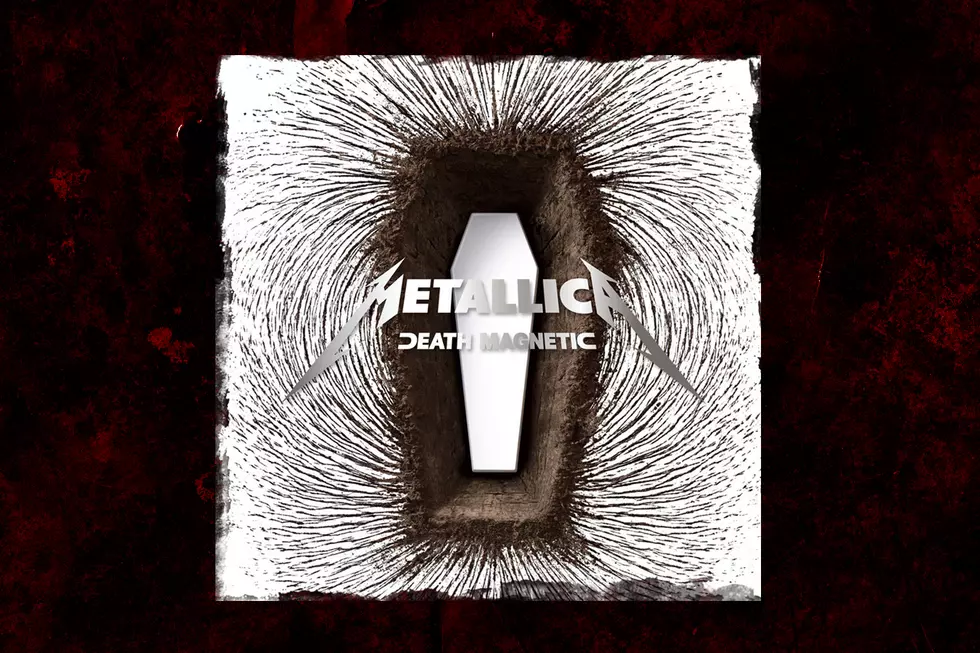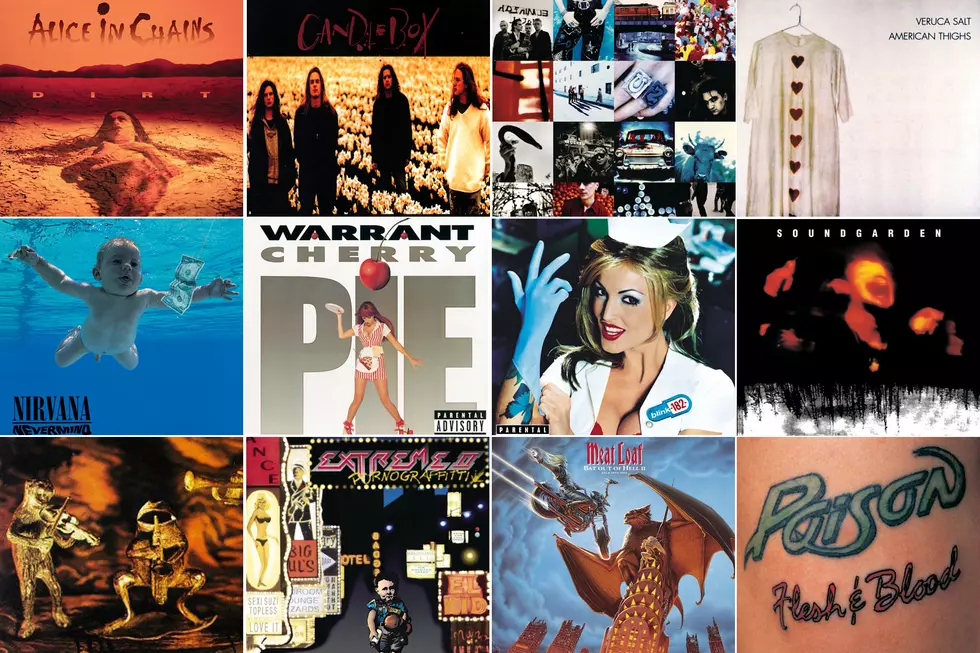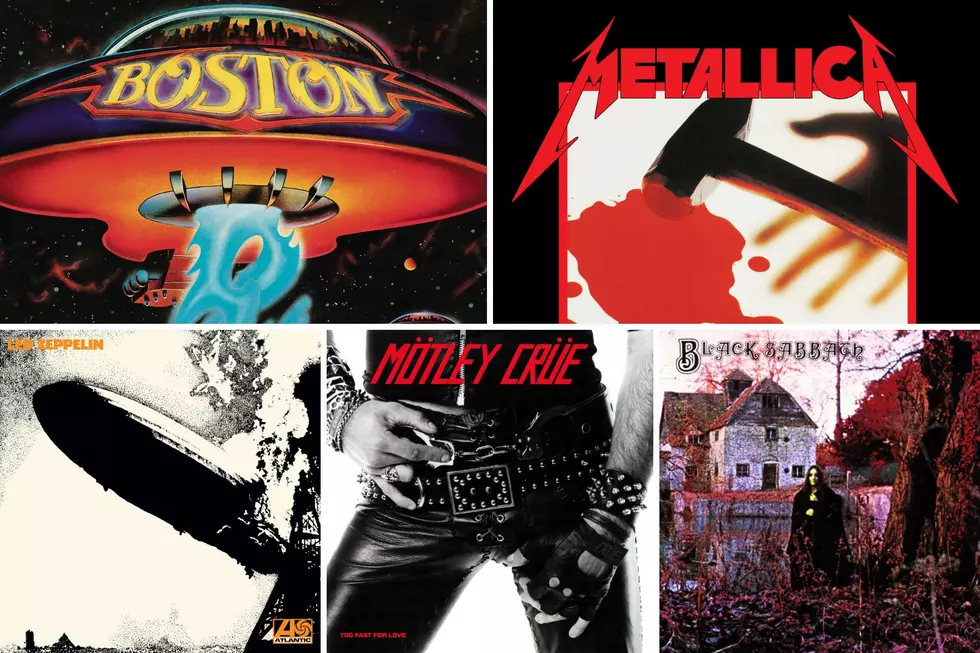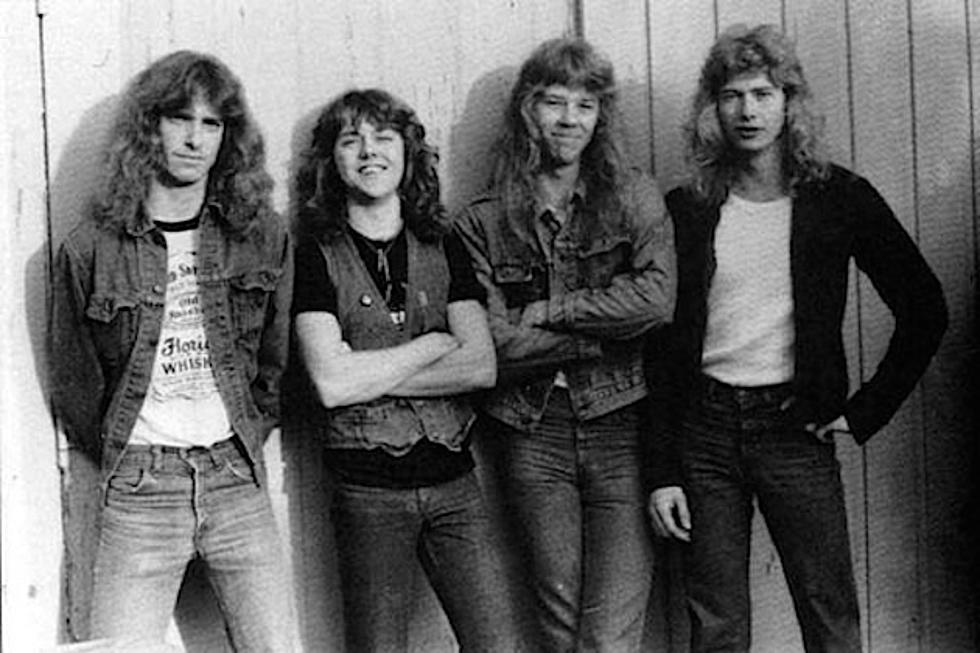
15 Years Ago: Metallica Release ‘Death Magnetic’
After Metallica released the widely lambasted St. Anger in 2003, the band was at a crossroads. It had always advocated taking chances and stepping outside the box, but the band members seemed to have fallen out of the box and needed to regain their footing. Then came Death Magnetic, which was released on Sept. 12, 2008. Those who dismissed Metallica as rich family men who had lost touch with the frustrations and fury of their audience were left stumbling over their words as the opening riffs of the first track “That Was Just Your Life” burst out of the audio openings of their earbuds.
This was Metallica as they were meant to be, barreling in full-on progressive thrash mode in a way they hadn’t since 1988’s …And Justice for All. Not only was the band firing on all cylinders creatively on their ninth studio album, they were vibing in a way they hadn’t since the death of Cliff Burton. Even though the album was the first to feature bassist Robert Trujillo, Metallica had the chemistry of the Four Musketeers. And it wasn’t just that the music that was incisive, eclectic and on-point, the band members were seeing eye-to-eye in a way they hadn’t in years.
“We finally found out what our dynamic should be,” drummer Lars Ulrich told me in 2012. “At some point we just stopped competing and found out that we’re better off when we’re not trying to trump one another. It’s not about winning or losing an argument, it’s about appreciating the fact that the sum of both of us will always be better than either of us individually and we sort of depend on each other and need each other and are better off for having each other.”
Metallica, Full 2008 Live Show at Rock Am Ring
Ulrich first noticed the personality shift almost a year after Metallica stopped touring for St. Anger. The band played a pair of shows opening for The Rolling Stones on Nov. 13 and 15, 2005, in San Francisco, and suddenly their relationship took on a warmer tone than it had throughout the St. Anger cycle. “We hadn’t seen each other for the better part of a year and then we played those shows. I can’t explain why, but when we got together again there was a different vibe. That’s really seems to be when the transformation happened.”
Metallica met at their studio in San Rafael, Calif., in early 2006 and started assembling the songs that would eventually compose Death Magnetic. While the band retained some of the groove of St. Anger and Load on tracks like “The End of the Line,” “Broken, Beat & Scarred” and “The Day That Never Comes” and “The Unforgiven III” are similar to the lighter fare of “The Black Album,” most of Death Magnetic is fast, and thrashy, with multi-faceted songs that clock in at an average of about seven minutes long. The album also featured melodic guitar harmonies and nimble-fingered solos, other Metallica trademarks that were absent from St. Anger.
Metallica, "The Day That Never Comes"
While the material for Death Magnetic really started to gel in the studio, Metallica had been jamming riffs backstage at venues as early as 2004. By April 2006, Metallica had the frameworks in place for six to seven new songs. The next month guitarist Kirk Hammett said the band were working with roughly 15 songs and continued to bang out new material at an average of two or three songs per week.
Parting ways with Bob Rock, who had produced every Metallica album since “The Black Album,” the band worked with producer Rick Rubin (Slayer, Slipknot, Black Sabbath), who encouraged them to listen back to their first four albums to gain a new understanding of the type of fast, focused songwriting they were striving for. The problem wasn’t that Metallica didn’t know what to do for any given song; it was more a case of having too many ideas.
“I feel that we’re so good at writing that there are so many options of what a song can be and sometimes I long for when I didn’t feel that was the case,” Ulrich said. “James Hetfield will play a riff. It’ll be a great riff. Now, I can have him play it in a way that his right hand makes it gallop more and I’ll play a really fast drumbeat to that riff and it can became a really fast thrash song. I can find a way for it to be more of a mid-tempo stomper. That same riff, I’ll play more of a 4/4 Phil Rudd type of thing, and he changes the pattern on the right hand a little bit or picks it different. I can suggest he plays the same notes in a melodic picking way and I’ll put a 'Fade to Black' kind of vibe behind it and it becomes a ballad. All those options present themselves instantly because we’re really on top of the particular niche that we do.”
Rubin didn’t start recording Metallica until he was sure their new songs were as close as possible to being finished. The group quickly winnowed 25 songs down to 14, then in April, 2007 they started tracking with Rubin at Sound City Studios in Van Nuys, Calif. They also recorded at Shangri La Studios in Malibu, California, and the band’s own HQ in San Rafael.
Metallica, "All Nightmare Long"
Thematically, Death Magnetic is a dark album, addressing mortality, self-immolation, betrayal and addiction throughout its ten tracks. “Some people are drawn towards death just like a magnet,” Hetfield told VH1 TV. “Other people are afraid of it and push away. And the concept that we're all gonna die sometimes is over-talked about and then a lot of times never talked about. No one wants to bring it up. It's the big white elephant in the living room. But we all have to deal with it at some point. So that's kind of the [main] subject matter."
In keeping with its subject matter, the cover of Death Magnetic depicted a white coffin at the bottom of a grave, and it was surrounded by metal shavings that formed a magnetized pattern around the image. But the way it was rendered, it resembles a hairy vagina. Whether the intent was to point out the duality between birth and death, or whether it was an unconscious move on the artist’s part is unclear.
But Metallica were surely aware of the double-entendre. “Of course we knew what it kind of looked like,” Ulrich said. “Those elements were with us from the very birth of that idea. When we were sitting around with David, our designer, and he was showing us different ideas, we were obviously well aware of that and we liked the abstractness and the many different ways it could be viewed, absolutely.”
Metallica, "My Apocalypse"
Metallica finished recording Death Magnetic on May 22, 2008, and by Aug. 10 it was mixed and mastered. The album debuted at No. 1 on the Billboard album chart nearly going gold in three days of sale, with 490,000 units shifted. It was the highest first week sales for Metallica since Load came out in 1996 and it gave the band its fifth straight number one album debut. In addition to debuting at No. 1 in the United States, Death Magnetic also topped the charts in 33 other countries. It remained at number on in the States for three straight weeks and remained in the top 200 for 50 weeks.
Three years after the release of Death Magnetic, Metallica released the four-song EP of tracks that didn’t make the cut, Beyond Magnetic. Each of the songs on the EP, “Hate Train,” “Just a Bullet Away,” “Hell and Back” and “Rebel of Babylon” were given away to the band’s fan club members earlier that month at special shows celebrating Metallica’s 30th anniversary.
Loudwire contributor Jon Wiederhorn is the author of Raising Hell: Backstage Tales From the Lives of Metal Legends, co-author of Louder Than Hell: The Definitive Oral History of Metal, as well as the co-author of Scott Ian’s autobiography, I’m the Man: The Story of That Guy From Anthrax, and Al Jourgensen’s autobiography, Ministry: The Lost Gospels According to Al Jourgensen and the Agnostic Front book My Riot! Grit, Guts and Glory.
Every Metallica Song Ranked
More From Loudwire









